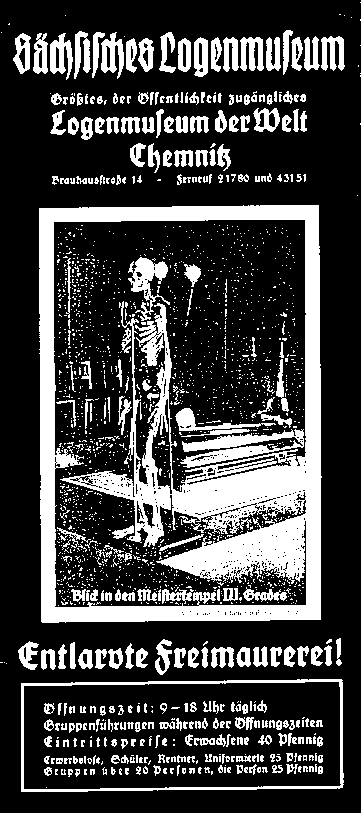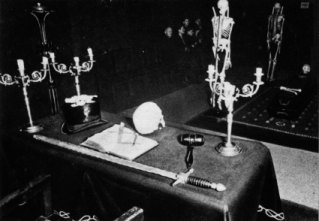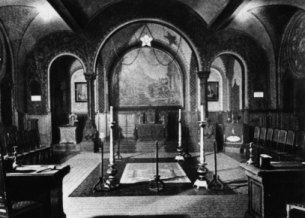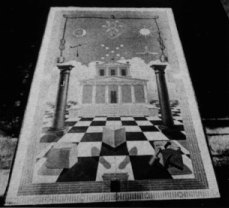Nationalsocialist cultural policy aimed at the destruction of reputation and esteem of all the prosecuted groups and communities. Most famous of these strategies of cultural diffamation was the exhibition "Degenerated Art" ("Entartete Kunst") shown at many places in Germany from 1937 onwards. Communists were attacked by a similar agit-prop travelling exhibition "Paradise of Sovjet " ("Sowjet-Paradies").
A much more severe way of attacking the cultural identity of oppressed
communities was to transform their ritual or religious buildings in "museums"
that
had the duty to unmask the secrets, to profane and dishonour the sacred
community rooms and - above all - to to prove to everybody how dangerous
these peolple had been to Germans.
While Nazis methodically deported and killed Jews they also collected
systematically their cultural and religious object in order to create in
Prague a large (Anti-)Jewish Museum. Due to the effects of war the
Third Reich was not able to realize this plan.
Better success they had with masonic buildings, because they had been closed some years earlier than synagogues. Several bigger temples in different regions of Germany had been selected and converted into museum (e.g. the "Westdeutsches Freimaurermuseum" in Düsseldorf or the "Sächsische Logenmuseum" in Chemnitz).

In 1935, after the end of all masonic activities of the "Harmony",
the Nazi turned their building with its 9 ritual rooms into a museum and
added in the second floor an exhibition with masonica brought together
from other Saxonian lodges. Three rooms with showcases and information
had to prove how un-German, pervers and Jewish masons are - and that Hitler
deserved great thanks for bringing an end to this dangerous fraternity.
At that time "Harmony" was the second biggest lodge in Germany and had one of the largest and most beautiful temples. This building achieved now dubious fame as - according to contemporary museum's adverts - "the world's biggest lodge museum accessible to the public".

From the start in 1936 up to 1943 over 1 million of visitors came to see this exhibition - more than to all other museums of Chemnitz together! These big figures as well as the 80000 distributed guidebooks show, that despite wartime restrictions the National Socialist Party kept up the emphasis on anti-mason propaganda. Contemporary reports stress another surprising fact: Many visitors were foreigners, this means under conditions of war: people from recently annected or conquered countries in east and west.This Museum in Chemnitz seems to have been one of the most efficient instruments on anti-mason propaganda in Central Europa.




#
The Lodge was kept open longer than other museums in Chemnitz. They
had the chance to protect their collections by sheltering them in mountain
caves and mining galleries. The masonic Museem seems to have "worked" up
to the very end, when it was bombed and destroyed together with
the whole City at 5th March 1945. The building, the rich decorations and
the important collections were lost in one night. A leaflet, an entrance
ticket and a decorative post mark - these are the only traces this loge
museum has left in the collections of our City Museum of History!.
A yesterday "museum of shame" obliges a museum of today! Therefore our
exhibition on the history of the "Harmony" is intended to be an effort
to undo a bit of the public damage caused by the Nazi-museum and to restore
the honour of the lodge they have deserved in the history of our town.
The new exhibition is on the other hand a great and successful effort to
turn up masonic objects of our town. Hitler did achieve to some extent
to destroy masonic life and culture in Germany. It is up to us to save
at least the memories.
e
x
t
 |
 |
| masonic links | Visit the Museum |
| top
of this page |
Freemason Homepage |
 |
 |
a
c
k